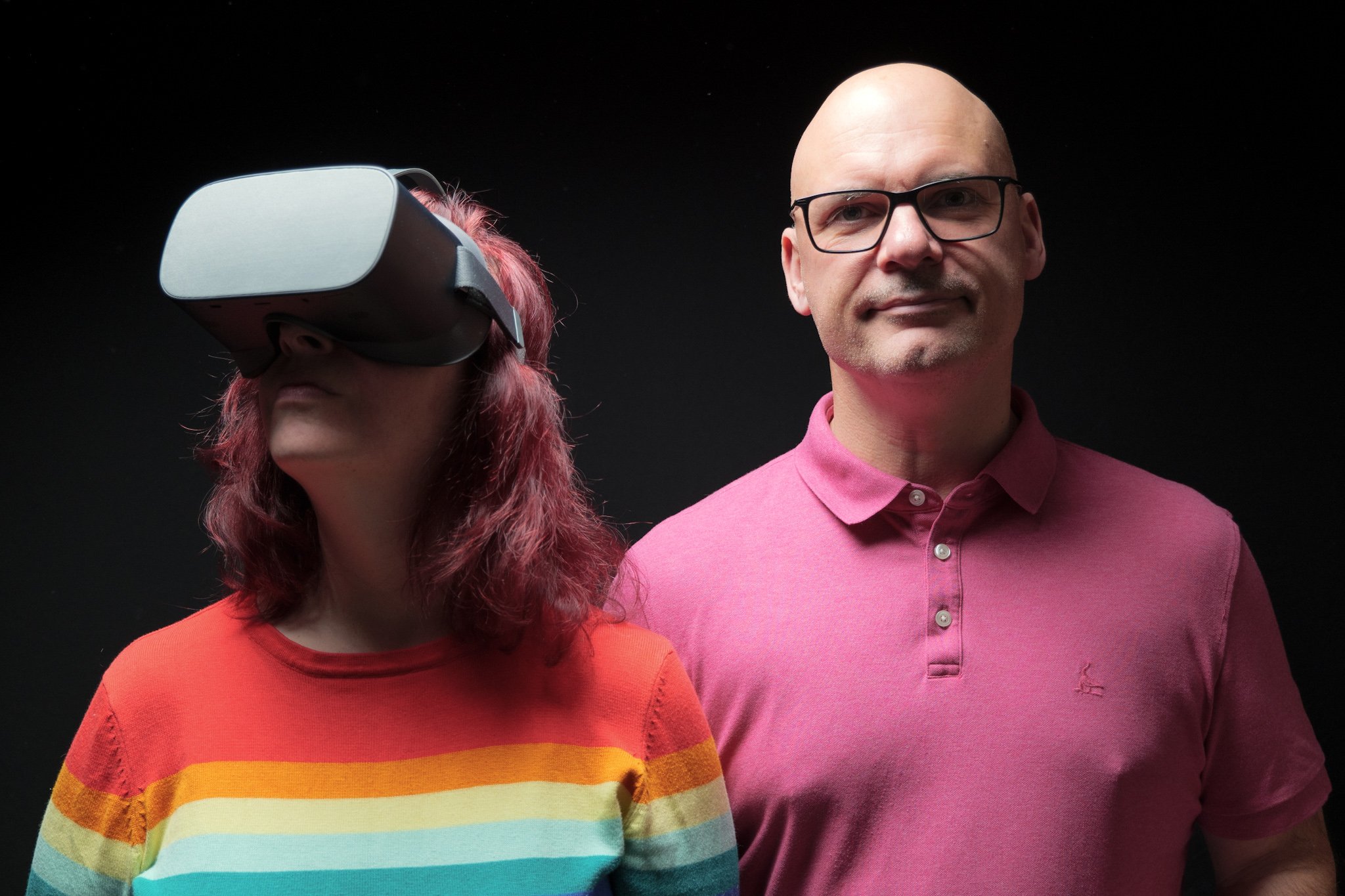
Box Office VR aims to make shows accessible to all
Democratising theatre with VR
Kelman and Gemma Greig-Kicks are on a mission to use virtual reality technology to democratise theatre and provide new income streams for creators.
In the spring of 2020, as theatres closed, archive recordings of productions were dusted off and YouTube was deluged with new short-form content. And Zoom was having its moment, being transformed from a conference call platform to a theatre space.
With backgrounds in theatre touring and multimedia production, the two of us began imagining a new way for theatres and production companies to showcase and monetise their digital work. One that was immersive, accessible and financially viable, with the theatre industry at its heart.
It’s one thing to have a blue-sky vision for the future of digital theatre and storytelling but quite another to make it happen. Through extended contacts, we found 42 Interactive, a Sydney-based digital transformation company who joined forces with us to bring Box Office VR to life.
Why virtual reality?
The vision was to combine relatively new technology – Virtual Reality (VR) film – with a traditional touring theatre business model, with ticket revenue shared. With Box Office VR, up to 80% goes to the producers and venues, ensuring income goes back to the industry. We also wanted to make the VR shows accessible to anyone, whether or not they had a dedicated VR headset.
VR – in particular VR180 (a 180° panorama rather than 360°) – more closely replicates the experience of being at the theatre than, say, a multi-camera shoot of a theatre show. As an audience member, VR180 brings you ‘into’ the space, giving you the autonomy to look all around the performance area.
With more traditional 2D production, it is the director’s cut that dictates what you see. VR180 film is not computer-generated, it isn’t a gaming experience. It does not require you to be standing, turning, partaking. It is a 3D, passive, gentle, seated experience. Accessible and intimate.
Virtual theatre in practice
For producers, capturing a performance on film is becoming more financially viable. Theatre makers can film their work and upload it to the platform, from where audiences can access it. Alternatively, Box Office VR can find a ‘shooter’ for them.
We felt strongly that this model should be pay-per-view rather than a monthly subscription. Using the Android or iOS apps that accompany the platform, you can log in, then choose and pay for a show (average £5). You then have two weeks in which to start watching it. Once started, you have 72 hours to finish, giving you time to pause and re-join.
We were clear we wanted people without access to the likes of an expensive Meta headset (nee Oculus) to be able to access this VR theatre experience. So we cater for both the dedicated VR headset market and the budget-friendly mobile phone headsets (from around £15) powered by Google Cardboard technology.
Mobile VR isn’t the pinnacle of a virtual reality experience, but it’s the only way to ensure a democratisation of VR experiences. Although lower in resolution, the smartphone has clever gyroscopic tech packed inside, which enables the viewing of VR environments from a fixed viewpoint with a dummy headset that the phone slots into.
Combining these elements means we offer a unique product for the industry. A pay-per-view VR platform that can be accessed by anyone with a smartphone and can be used by theatres and producers, big or small.
The future
VR will never replace the experience of live theatre. But it can provide a unique immersive experience for those who can’t get to the theatre due to geography, socio-economic circumstances, or special needs. Or for that school kid who has never stepped foot inside a theatre, but just might after experiencing a production from the safety of their own four walls. VR provides access to an experience that no other technology has yet managed.
We are not the first to play with VR theatre. There is a myriad of artists already out there and more coming to the virtual door every day. But our vision of democratising VR theatre is dependent on how the technology aligns.
There’s a rumble of excitement in the VR jungle about the release of Apple’s Vision Pro headset. Designed as an AR (Augmented Reality) device, it will no doubt propel the industry into new territory. However, it’s no panacea. Retailing at around £3k in the UK, it’s not about to bring about a seismic democratic shift in VR usage. But Apple’s entry into this space may achieve a trickle-down advance that furthers the development of virtual reality experiences for the performing arts.
Our hope is for Box Office VR to provide more people with the opportunity to experience immersive theatre, particularly if they can’t access it live. To give creators the ability to monetise and share their work. And to bring new income streams to venues in these financially challenging times.
Kelman and Gemma Greig-Kicks are Co-Founders of Box Office VR.
![]() [email protected]
[email protected]
![]() boxofficevr.com/
boxofficevr.com/
![]() facebook.com/Boxofficevr/
facebook.com/Boxofficevr/

Join the Discussion
You must be logged in to post a comment.